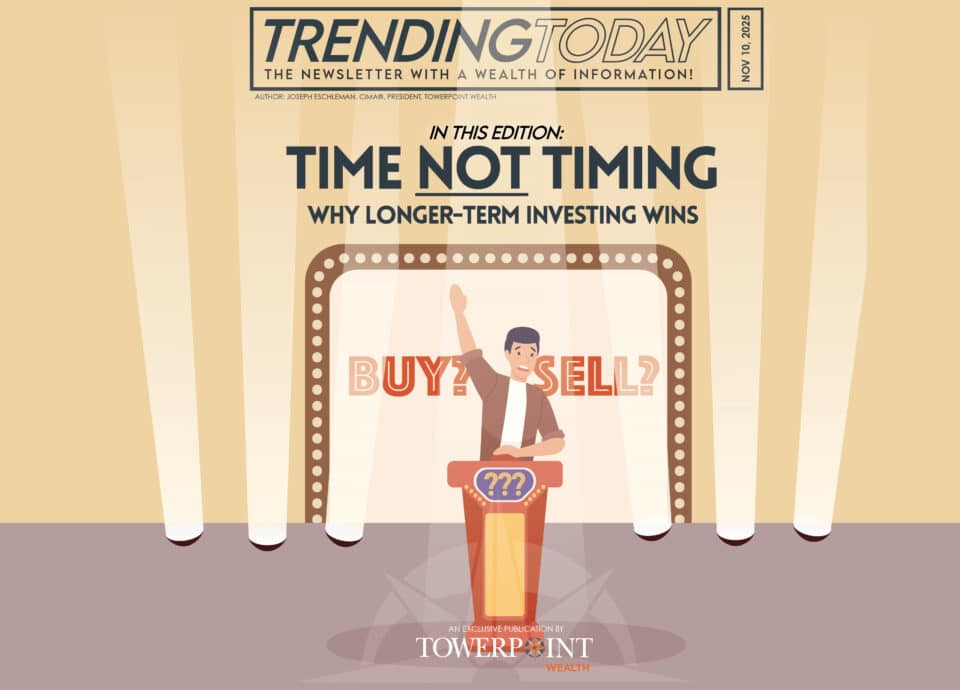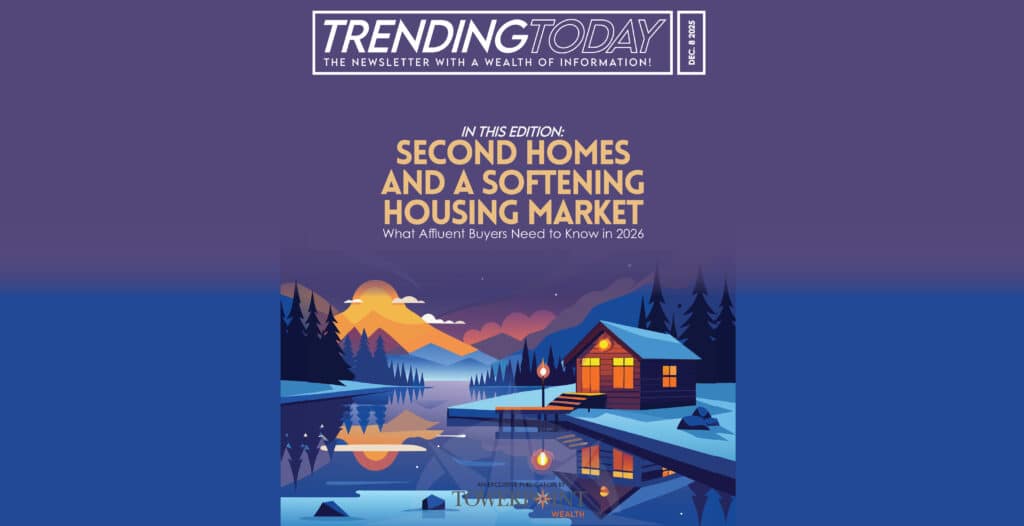“An Investment in Knowledge Pays the Best Interest” (Ben Franklin)
Hot town, summer in the city
Back of my neck getting dirty and gritty
Been down, isn't it a pity
Doesn't seem to be a shadow in the city
All around, people looking half dead
Walking on the sidewalk, hotter than a match head
But at night it's a different world
Go on out and find a girl
Come-on come-on and dance all night
Despite the heat it'll be alright
(From “Summer in the City”, by The Lovin’ Spoonful, 1966)
The “dog days” of summer are upon us, and the “out of office” email bounce backs have increased accordingly. But while many Northern Hemisphere workers may be taking their summer breaks, the global economy continues to grind along.
The trends that have been in place for many months continue relatively unabated:
1. The global economy is still growing, but is decidedly slowing down, especially in manufacturing;
2. Less than halfway through the S&P 500 earnings report season, earnings growthis slightly positive year-over-year, but at a much lower growth rate than recent comparable periods;
3. Perhaps more troubling, the “revenue beat rate” is lower than historical averages. Put differently, companies are matching or beating their earnings expectations, but via financial engineering (e.g. stock buybacks) rather than by way of organic top-line revenue growth;
4. Interest rates remain low and, in fact, have fallen due to slowing global economies and the absence of inflation. According to Deutsche Bank, roughly 25% of all publicly traded sovereign and corporate debt is currently trading at negative yields!
5. Adding fuel to that fire, both the Fed and the ECB are expected to announce further monetary easing over the next month or two, especially in Europe as Mario Draghi prepares, later this year, to hand over the ECB reins to the former. Head of the International Monetary Fund, Christine Lagarde. Lagarde is widely viewed as a fairly extreme “dove”, and so the ECB is expected to remain very accommodative into the foreseeable future;
6. Inflation remains a non-issue in all major economies, though there are slight signs of upward pressure in the US as wages rise slowly but steadily; and
7. All major central banks remain completely accommodative, with not a single one even contemplating tightening measures.
The primary risks to the global economy remain geo-political – the on-again / off-again trade negotiations between the US and its major trading partners (especially China), renewed aggressive activity by North Korea, increasing tension with and actual aggressive activity by Iran in the Middle East and, perhaps most importantly (at least in the short term), the uncertainty over “Brexit.”
Theresa May was unable to negotiate a successful conclusion to “Brexit”, and it cost her the Prime Minister’s office. She has been replaced by the iconic and flamboyant Boris Johnson, a former Mayor of London and Cabinet Member in Theresa May’s government. Johnson promises a successful conclusion to his respective negotiations with the European Union and his own parliament over the issue of “Brexit,” but the markets do not share the same confidence – UK interest rates and the pound are both falling, the economy is slipping, and Bank of England Head Mark Carney continues to support “easy money” policies to try and stem the tide.
In our opinion, the global markets have become entirely too dependent on central bank policy. Central bankers are neither omniscient nor all-powerful and, besides, they may be running short of policy bullets to shoot. We fear this may not end well.
The Current Economic Landscape
The global economy is still expanding, though slowly:
• Through the end of July, the current estimate of US Q1 GDP growth slid slightly again to 3.0%, still positive but a slight decline from the early initial estimate of 3.2%. The initial estimate for Q2 GDP growth came in at 2.0% (source: The Wall Street Journal);
• US growth estimates for all of 2019 are roughly 2.2%, with further declines in later years (source: The Wall Street Journal);
• Ongoing trade negotiations and additional fiscal and/or monetary stimulus could change the economic outlook for the US over the course of the year. There does appear to be some progress in the negotiations between the US and China, but the market reacts strongly to the on-again / off-again nature of the discussions. The consensus is that some sort of deal will be reached toward the end of this year, but the “devil is in the details.” Some estimates suggest that a protracted trade war could shave as much as 0.5% off of projected US growth, and it is having an even worse effect on Chinese growth;
• Although the rhetoric and partisanship in Washington, DC suggest that therewill be no formal fiscal stimulus ahead of the 2020 elections, the two sides recently verbally agreed to lift the debt ceiling and increase both domestic and military spending caps, which will have a similar stimulative economic effect (at the expense of exploding national debts and deficits);
• That said, the market is pricing in a locked-down assumption that there will be additional monetary stimulus in the form of Fed rate cuts. As we go to publication, the Fed is widely expected to cut rates by 25 basis points when it next meets at the end of the month. The early talk of a 50 bps cut has faded, but the possibility remains, and the market is still pricing in expectations of additional cuts later this year;
• We maintain our concern that the risk profile of the market is very asymmetrical right now – in the wrong direction. What we mean is that the market seems to have fully priced in a lot of positive assumptions about trade and interest rates. If something else happens (as is always a possibility), we fear the market may react quite negatively;
• Both the US manufacturing (51.7) and services (55.1) sectors remained in expansionary mode in June (any reading above 50 is considered expansionary), but both slipped significantly versus prior months, suggesting a slowing economy, (source: The Institute for Supply Management);
• The IHS Markit estimate for July suggests a decline in the PMI down to 50.0 – a 118- month low (source: IHS Markit);
• Inflation remains muted (US CPI was just 1.6% year-over-year in June), and remains below the target rate of 2% set by the Fed. In a world where there is more than $12 trillion in negative yielding sovereign bonds and $600 billion in negative yielding corporate bonds, there seems to be an insatiable demand for US Treasury paper, even at rates as low as they have been in several years (source TradingEconomics);
• The employment picture in the US remains robust, and wages ticked up 3.6% year- over-year in May. Automation and globalization remain firm dampeners on wage growth, despite the low levels of unemployment – 3.7% in June (sources: The St. Louis Federal Reserve Bank and TradingEconomics);
• With the Q2 earnings season less than halfway through, the overall picture is positive but with signs of deceleration. Of the roughly 150 companies in the S&P 500 that have reported as we go to publication, the earnings growth rate has been roughly 2.8% year-over-year, on roughly a 3.4% higher revenues. Fully 79% of reported companies have beat their earnings expectations, but only 59.4% have beaten their revenue expectations, suggesting financial engineering (primarily stock buybacks) is alive and well; (source: Zachs Earnings Outlook,
• The primary threats to continued economic expansion are tenuous trade and tariff negotiations (specifically between the US and China), signs of renewed aggression by North Korea, ongoing political “re-adjustments” in Europe, especially in the UK, Germany, and Italy, and escalating geo-political tensions between Iran and the “West”;
• With low inflation, signs of a decelerating economy, and huge investor demand for US Treasuries, there is little upward pressure on interest rates;
• The yield curve remains very flat, and the long end remains “tamped down” by high demand for US Treasuries and a lack of inflation fears;
• As we approach the end of July, there is only ~22 basis points difference between the yield on the 2-year and 10-year Treasury – the yield curve was fairly stable over the course of the month, and the 10-year Treasury rate currently is trading just above the psychological boundary of 2.00% (source: YCharts);
• Although the yield curve has not inverted as measured by the 10-year / 2-yearspread (our preferred measure), it is slightly inverted if measured by the 10- year / 3-month spread. Some analysts believe this to be a harbinger of an impending recession. We continue to think this is a bit over-stated, at least through the remainder of this year (source: YCharts);
• The US dollar generally weakened against the yen over the past month, but has strengthened versus the euro, given the explicit dovish sentiments expressed by Mario Draghi at the European Central Bank (ECB), as well as the assumption that his successor, Christine Lagarde, will remain equally if not more dovish (source: YCharts);
• There is a school of thought that President Trump does not mind the see-saw nature of the US / China trade negotiations because he believes it keeps the pressure on the Fed to remain accommodative. He has been outspoken (inappropriately, in our view) in his desire for lower rates and a weaker dollar, which he believes will reduce our trade imbalances. This strikes us as slightly too cynical but, regardless of motivation, it is a fairly accurate representation of where things currently stand with the Fed;
• The Euro area reported a Q1 GDP growth rate of 1.2%, the same as the previous quarter and in line with expectations. While not in a recession, European economic growth has fallen fairly steadily since 3Q, 2017, and is expected to fall further as we head through 2019 – early estimates for the Q2 growth rate are below 1% (source: TradingEconomics);
• Manufacturing all across the Euro area continues to slip and remains in nonexpansionary territory – 46.4 in July, the steepest monthly decline since December 2012, and the lowest reading since April 2013 (source: IHS Markit and TradingEconomics);
• The Euro area Services index remains slightly expansionary (53.3 in July, down from 53.6 in June) (source: TradingEconomics);
• Euro area unemployment fell slightly in June to 7.5%, and remains at its lowest level since 2008 (source: TradingEconomics);
• Inflation is a non-issue in Europe (up 1.3% year-over-year in June, but remaining at its lowest level since April 2018), and the ECB has turned decidedly dovish again. Deflation represents the bigger risk at this point
• Japan’s GDP is back in positive territory (1.8% in Q4 2018 and 2.2% in Q 12019), but remains sluggish and sensitive to changes in exchange rates. A weakening dollar (should it continue) will hurt Japanese exports, a critical factor in its economic activity (source: TradingEconomics);
• China’s (official) GDP growth in Q2 2019 was 6.2% (annualized), the lowest reported growth rate since Q1 of 1992. Fairly massive fiscal and monetary stimulus has had some positive effect, but the Chinese economy has been hit much harder than the US economy during the on-again / off-again trade negotiations. The simple fact is that China needs the US more than the US needs China (though both sides lose in an extended or escalated trade war) (source: TradingEconomics);
• The Chinese manufacturing index slipped back into contractionary mode in June, coming in at 49.4 (source: TradingEconomics).
The Towerpoint Wealth Economic & Market Outlook:
• The global economy remains non-recessionary, though there is a decided deceleration of growth, and ongoing trade tensions are beginning to have a tangible negative effect;
• US economic growth, interest rates, inflation, and earnings all remain at least slightly expansionary. Wages and input prices are slowly increasing, but we do not see them as threats (yet) to continued expansion;
• Globally, inflation simply is not a problem, due to slow growth and relatively stable input prices. Oil prices rose steadily through mid-May, fell off sharply toward the end of that month, but generally have stabilized since then at around the $60-$65 per barrel range (for Brent Crude);
• Global central bank policies remain “synchronized” around an easing theme, and this should be beneficial for risk assets. The UK and the ECB in particular have ramped up their “easing” activities, ahead of what could be a messy “Brexit” and the continued slowdown of economic activity in Europe;
• Market volatility spiked in May as investors showed increased nervousness over trade tensions, Brexit, and the perception of slowing economic growth. Since then, however, volatility (as measured by the VIX) has drifted back down to repressed levels – trading below 15% for most of July. Investors so strongly believe that trade tensions will ease and central banks will remain accommodative that they have slipped back into complacency (source: The St. Louis Fed);
• The ongoing market rally since June has raised US valuations back to historically high levels – once again, nothing looks cheap to us. More worrisome is that the rally is being driven by multiple expansion. Earnings are positive but soggy, but investors are willing to pay more and more for every dollar of earnings. By definition, this dampens the potential for longer-term returns;
• For longer-term investors we still like EM valuations relative to US or EAFE (developed international) valuations. Should the dollar continue to weaken, that will be beneficial for non-US market returns for US investors. The aggressive easing activities in Europe may prove beneficial for European-based EAFE risk assets;
• The US yield curve remains incredibly flat (there currently is a ~22 bps difference between the 2-year and 10-year yields), as lower longer-term expected growth rates and investment flows combine with only modest inflation expectations to “tamp down” the long-end of the curve (source: YCharts);
• As of the end of July, the 10-year Treasury rate was trading just above 2.00% – its lowest level since Q3 of 2017 (source: Charts);
• The yield curve remains slightly inverted if measured by the spread between 3-month rates and 10-year rates. As of the end of July, there was a negative spread of roughly 2 basis points (source: YCharts);
• The public credit markets continue to look expensive to us, although investors seem to be fairly compensated for default risk, as corporate balance sheets generally are in pretty good shape;
• Both investment grade and high yield credit spreads widened over the course of May, especially high yield spreads, but those spreads drifted generally lower over the course of June, and at the end of July remain incredibly tight by historical standards (source: YCharts);
• We remain concerned about high yield liquidity and refinancing risk and the growing level of“covenant lite” bank loans. Additionally, more than 40% of non-financial investment grade debt is rated BBB – the lowest investment grade level. If and when we head into the next recession, there could be a liquidity crisis if more than a modest amount of this debt falls into non-investment grade territory (source: FocusEconomics);
• As we go to publication, the yield on 10-year Greek sovereign debt is trading below that of the yield on 10-year US Treasuries. This is due to a slowing European economy and high anticipation of additional monetary easing by the ECB. When considered from a relative credit risk perspective, however, this is absurd, and is simply another illustration of how excessive central bank intervention can distort the global capital markets;
• For investors who can access the private markets and handle some degree of illiquidity, we still believe there are better opportunities in the private versus public markets, though investors face increasingly compressed premiums versus historical levels, driven by huge investment flows over the past 24-30 months. At this point in time, we have higher conviction in the private equity market versus the private credit market;
• Hedge funds generally are performing as expected and, given valuation levels for the traditional public equity and credit markets, there is growing investor interest in considering lower-correlated investment strategies. Despite low interest rates and low volatility, many hedge funds seem to have “found their footing” and are generating returns more in line with historical expectations;
• Liquid alternatives (alternative investment strategies that trade in mutual fund form) continue to struggle, though they, like their hedge fund cousins, are showing signs of improvement;
• Real assets and commodities generally have been stable to slightly rising over the past few months, helping to keep input price inflation well in check;
• When we consider the fundamental drivers of market performance – economic growth, earnings, interest rates, inflation, and central bank policy – we remain generally constructive, but we have entered a new phase of the market cycle, and we expect increased volatility and periodic bouts of investor panic as we move through the year, especially once the “dog days” of summer are over;
• With that in mind, we believe a heightened focus on quality, liquidity, and diversification is an appropriate course of action.
People are on vacation and, here in the US, Congress is about to head off for a 5-6 week recess. So we expect a generally quiet period as we head into and through the heart of the summer. But while the risks may lie dormant due to general inattention, they certainly have not gone away. Enjoy the more relaxed market environment while you can – we suspect things will get “interesting” again once the summer months have passed.
Warm Regards,
Joseph F. Eschleman, CIMA® President Towerpoint Wealth, LLC







